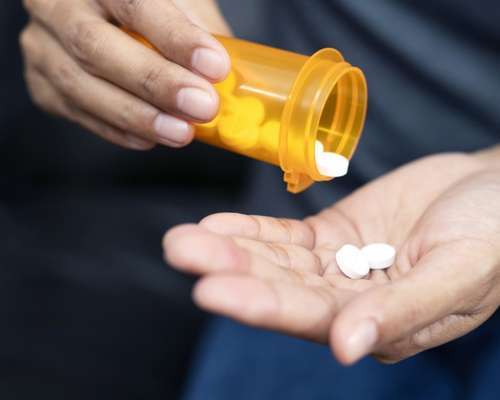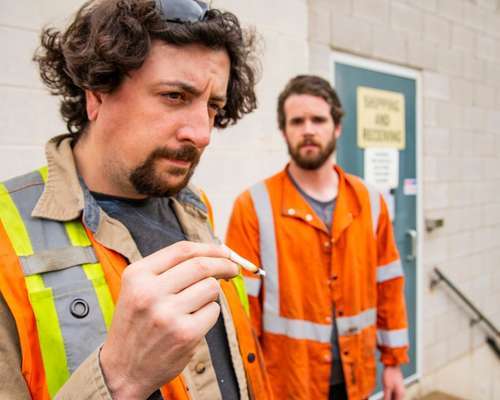5 Minute Read
June 30, 2023
0%

“I worked in construstruction and was a functioning addict from when I started, when I was 18,” said Tommy, an Australian construction worker trying to overcome his addictions in a recent Vice article. “At the start it was always pot. Ecstasy pills. Cocaine. And then after that drinking came into it because it’s just part of the culture. It’s construction: If you can’t drink, you can’t be trusted and be part of it.”
Construction is hard work, and hard work can often lead to aches and pains—both physically and mentally. Drugs are often turned to as an answer. It might start with self-medicating. It might start with doctor-prescribed treatments. It might start with recreational use. Regardless, drug abuse and addiction has become a significant issue among construction professionals across the globe.
The construction sector has one of the highest substance abuse and related disorders rates. In the United States, it ranks among the top three industries for things like illegal drug use, prescription drug abuse, heavy alcohol consumption and substance abuse disorders.
That’s why many in construction are looking at how new technologies and fresh approaches can help the construction sector address the growing drug abuse problem within its ranks.

Focusing on just the United States, the construction sector also has one of the country’s highest substance abuse and related disorders rates. Statistics show that more than 20% of these workers reported using an illegal substance in the last year. About 12% of those surveyed stated they’d used that substance within the last 30 days.
The statistics surrounding drug abuse in the construction industry are often alarming, especially when compared to other sectors. Among other industries in the U.S., construction ranks:
Research shows that construction employees with substance abuse disorders are more likely to change jobs often, experience attendance problems, struggle with productivity or get into workplace accidents. Opioids create some of the most significant risks for substance abuse because these workers have a higher risk of experiencing musculoskeletal pain or related injuries due to the nature of the job.
According to the CDC, construction workers prescribed opioids for these injuries have a higher risk of developing a substance abuse disorder. Around 15% of those prescribed opioids became long-term users, making them 10 times more likely to become addicted.

Addiction in the construction industry is such a widespread issue in 2022 that it will take extensive efforts to combat it. Here are some of the ways contractors around the globe are working to address the problem:

A growing number of construction trade organizations and associations are also stepping up efforts to help combat this growing problem.
Two of the United States’ largest construction trade groups—the Associated Builders & Contractors (ABC) and the Associated General Contractors of America (AGC)—are among a large contingent of construction groups committed to working with the Construction Coalition for a Drug and Alcohol-Free Workplace (CCFDAW) and is inviting companies to pledge to keep drugs and alcohol abuse off their job sites. This includes a firm substance abuse policy and zero tolerance for work-related incidents.
The CCDAFW’s mission “is to establish industry-wide recognition, and advocate the implementation of a strong substance abuse policy, as well as provide industry best practices to help achieve the goal of zero substance abuse-related incidences on the jobsite.” It asks its members to take a pledge to create drug and alcohol-free work environments.
Others involved with this effort include the Construction Industry Round Table (CIRT), Independent Electrical Contractors (IEC), Construction Users Roundtable (CURT) and National Center for Construction Education and Research (NCCER).
Of course, issues like mental health and addiction are not just limited to the work office or job site. Most who struggle with addiction carry it with them 24-hours a day. That’s why a lot of programs and prevention efforts go above and beyond work hours.
The Construction Financial Management Association (CFMA) has done a lot of work and industry awareness on suicide prevention and mental health in—and outside of—the workplace. As part of that and related efforts, the organization has also zeroed in on the root causes of addiction among construction professionals, especially as the opioid crisis has worsened in the United States.
Preventative measures and programs are supported by groups like the American Subcontractors’ Association (ASA) and the National Electrical Contractors’ Association (NECA). In 2021, NECA released a Substance Abuse Safety Brief that provided valuable information for identifying people who might be at risk of developing a substance abuse problem and resources for treatment options.

Contractors are doing their part as well.
Encore Electric, which was named the safest contractor of the year at the 2019 Construction Safety Excellence Awards (CSEA), makes addiction and mental health part of its safety commitment. “We provide programs for counseling, drug and alcohol addiction and financial planning to ensure our employees and their families are cared for beyond the job sites,” said Jack Cain, the company’s director of health and safety.
Even efforts that might not seem directly correlated to drug and alcohol addiction prevention are helping to stem the tide. Nebraska contractor Hawkins Construction issued its employees two extra checks worth $1,000 each to help combat rising inflation costs on items like groceries and fuel. “Everybody knows the problem there, but figuring out how to help the individuals who are carrying you, that’s something a lot of companies could learn from,” Nate Harper, a fabricator working at Hawkins told Construction Dive earlier this year.

While the construction industry long had been among the slowest to adopt new technologies, over the past decade now, it has been among the industries leading the tech charge. With that has come a lot of new applications and devices that can help address substance abuse in the workplace and prevent situations that could cause it.
Here are five ways to reduce opportunities for drug abuse with technology:
Prefabricated construction techniques are gaining popularity because they’re more cost-effective and easier to assemble. Getting people away from the traditional job site and removing a lot of the heavy lifting can help prevent the injuries that could lead to opioid prescriptions and later addiction.
Physical paperwork is a thing of the past. Digitizing management and HR tools makes it easier for team leaders to track important information, like drug test results. On the HR side, digitization makes getting information out to the entire team easier. That includes identifying those at risk for mental illness or substance abuse and providing information to, or offering insights into, treatment plans.

Robotics and automation can take over many mundane or dangerous tasks that might put construction workers at risk. Preventing injuries is key in avoiding prescriptions for pain medication that can lead to addiction. Adopting this technology can also improve productivity and efficiency, making it easier to meet deadlines.
Worksite safety inspections are essential, but inspecting partially finished projects can get dangerous once you start getting a few stories up. Drones take the risk and the human element out of these high elevation inspections or photo reporting, completing the same tasks without putting human workers in danger.
Construction wearables can help improve worksite safety in many ways. Even the most basic fitness watch can track heart rate and stress levels. More advanced devices can identify if someone is fatigued, where they are on the job site and even if they’ve fallen. This tech can’t currently identify substance abuse in the workplace, but collected data could help point site managers and business owners in the right direction.

Substance abuse in the construction industry is both a social issue (where human lives and wellbeing are at stake) and a business issue (where safety incidents and uncessessary rework from errors or mistakes can account for more than a quarter of contractors’ costs on any given project).
In addition to traditional methods, such as zero-tolerance policies and rehabilitation facilities, companies can use modern methods, lead by example to create a more positive culture, and leverage technology to help prevent substance abuse in the workplace.
Addressing the issue doesn’t mean assigning blame or playing strictly a numbers game. It helps put a human face on the very real issue of addiction—which millions of people struggle with.
5 Minute Read
June 30, 2023
5 Minute Read
March 24, 2021